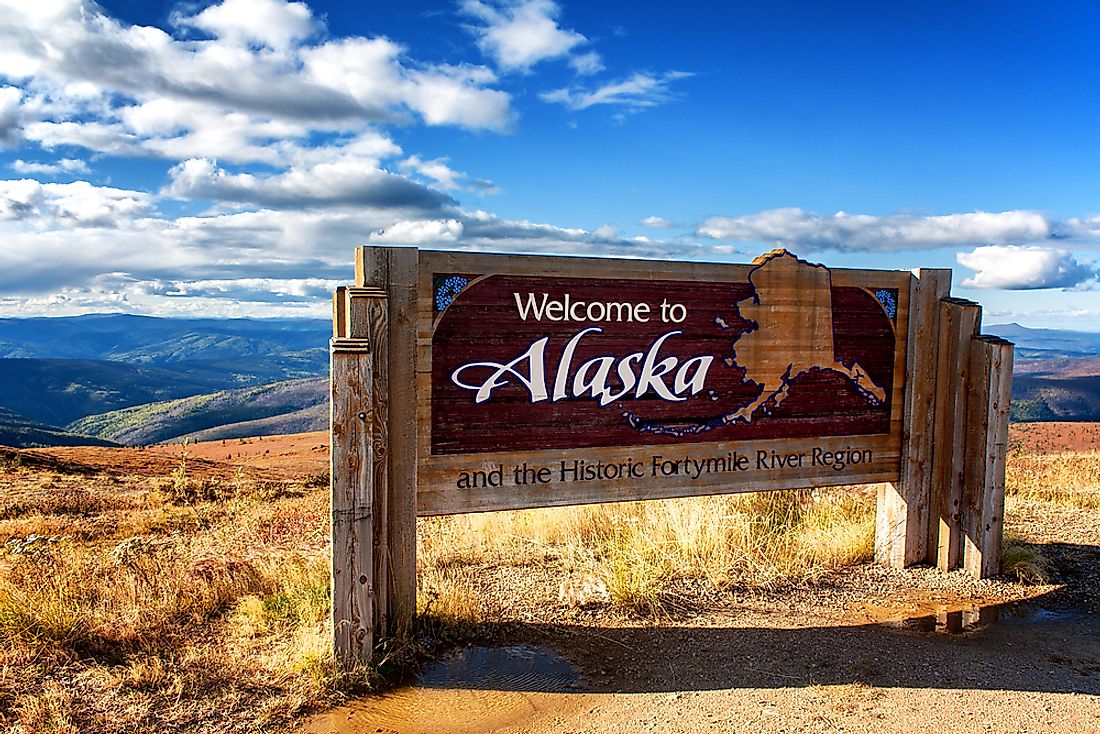What Languages Are Spoken In Alaska?

The state of Alaska is located at the northwestern extremity of the continent of North America. The United States of America admitted Alaska as the 49th state on January 3, 1959. It is one of two non-contiguous states, the other being Hawaii. Alaska is bordered by the Canadian province of British Columbia and territory of the Yukon. Alaska also shares a maritime border with Russia across the Bering Strait. Although Alaska is the largest US state, it is also the 3rd least populous with a population of 739,795 according to 2017 estimates. Due to its large size and small population, Alaska is the least densely populated US state.
Major Languages of Alaska
The majority of the Alaskan population (approximately 84%) speak English as their primary language. The next largest language is Spanish, spoken by 3.5% of the population. Other Indo-European languages and Asian languages are spoken by 2.2% and 4.3% of the population respectively. In addition, 5.2% of Alaskans speak one of the Alaska Native languages.
Native Languages of Alaska
There are 20 recognized Alaska Native languages in the state. These belong to four language families, being the Inuit-Yupik-Unangan, Athabaskan-Eyak-Tlingit, Haida, and Tsimshian.
The Inuit-Yupik-Unangan language family is also known as the Eskimo-Aleut or Eskaleut languages. This language family is divided into the Aleut language, spoken on the Aleutian and Pribilof Islands, and the Eskimo languages, further subdivided into the Yupik languages and the Inuit languages. The Yupik languages are spoken in western and southwestern Alaska as well as in Siberia whereas the Inuit languages are spoken in northern Alaska, as well as in Canada and Greenland.
The Athabaskan-Eyak-Tlingit language family is also known as the Nadene, Na-Dené, and Tlina–Dene languages. It is composed of the Athabaskan and Tlingit languages as well as the extinct Eyak language. The eleven Athabaskan languages are classified as Northern, Pacific Coast, and Southern due to their reach across Alaska and northwestern Canada, as well down the Pacific Coast and in the Southern States. The Tlingit language, on the other hand, is spoken by the Tlingit people of Southeast Alaska and Western Canada.
The Haida language is spoken by the Haida people of the Haida Gwaii archipelago (Canada) and Prince of Wales Islands (Alaska). As of 2014, there were only 14 native speakers of this dwindling language.
The Tsimshian language is spoken by the Tsimshian peoples of southeastern Alaska and northwestern British Columbia. It is known by the Tsimshian peoples as Sm'álgyax, meaning "real" or "true" language. There were 275 native speakers as of 2016.
Conservation of Native Languages
Although 20 Alaska Native languages were declared official languages in 2014, they are only spoken by small percentage (5.2%) of the Alaskan population. As these languages were not adopted for use by the government, their status as official languages is mostly symbolic. In April 2018, the Alaskan Senate passed a resolution asking Governor Bill Walker to recognize a linguistic emergency in regard to the 20 Alaska Native languages, arguing that loss of language means loss of culture. In September 2018, a state of emergency was declared directing the promotion of the Alaska Native languages in the media and the education system.
What Languages Are Spoken In Alaska?
| Rank | Alaska Native Languages |
|---|---|
| 1 | Ahtna |
| 2 | Alutiiq |
| 3 | Central Alaskan Yup'ik |
| 4 | Deg Xinag |
| 5 | Dena'ina |
| 6 | Eyak |
| 7 | Gwich'in |
| 8 | Haida |
| 9 | Hän |
| 10 | Holikachuk |
| 11 | Inupiaq |
| 12 | Koyukon |
| 13 | Siberian Yupik |
| 14 | Tanacross |
| 15 | Tanana |
| 16 | Tlingit |
| 17 | Tsimshian |
| 18 | Unangax |
| 19 | Upper Kuskokwim |
| 20 | Upper Tanana |











